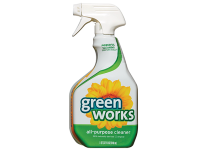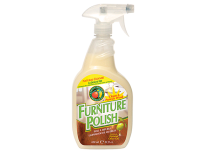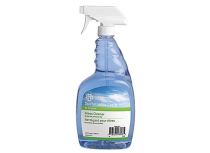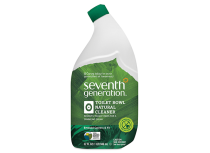Look for safer cleaning supplies to get the job done
The annual ritual of spring cleaning is meant to make your home a healthier place, getting rid of a winter’s worth of accumulated dust, mold, and mildew. But some of the sprays, powders, and foams you use to get the job done may not be so good for you.
One reason: Many household-cleaning products now incorporate ingredients once reserved for hospitals and health-care institutions. But “risky antibacterial chemicals aren’t necessary to get your house clean,” says Urvashi Rangan, Ph.D., director of consumer safety and sustainability at Consumer Reports.
So which cleaning supplies should you use—and which should you avoid? Manufacturers don’t make it easy to figure out because they’re not required to list all ingredients on their labels. And when they do, how do you decipher the long list of chemicals? Here’s what our experts say:

What to be aware of: Cleaners that contain ingredients like dimethyl benzyl ammonium chloride, such as Scrubbing Bubbles Heavy Duty All Purpose Cleaner and Clorox Disinfecting Wipes, may help breed antibiotic-resistant bacteria.
Better bet: Clorox Green Works All-Purpose Cleaner spray did a good job of removing soap scum and dirt in Consumer Reports’ tough mess tests and contains ingredients that are less likely to harm you or the environment. If you prefer ready-to-use cleaning cloths, which almost 25 percent of households now buy, try Clorox Healthcare Bleach Germicidal Wipes. “It’s a good option for when there’s a flu or cold going around the house,” Rangan says. “Bleach kills bacteria effectively without promoting superbugs.”
Find more top-rated cleaning products and how to allergy-proof your home.

What to be aware of: Aerosol sprays can contain volatile organic compounds, such as naphtha. They can irritate your eyes and throat and cause headaches and nausea. Plus they are often flammable.
Better bet: Opt for pump sprays, such as Earth Friendly Products’ Furniture Polish. “Pump sprays don’t contain environmentally problematic propellants, are easy to use, and the chemical droplets are larger and less likely to be inhaled,” says Rolf Halden, Ph.D., director of the Center for Environmental Security at Arizona State University in Tempe.

What to be aware of: Full-strength household ammonia (5 to 10 percent), can potentially damage your lungs and blind you if it splashes in your eyes. It’s usually found in gallon jugs at supermarkets and drugstores. (Never mix ammonia and bleach—it creates dangerous fumes.)
Better bet: If you do use ammonia, dilute it, says Pat Slaven, test-product leader at Consumer Reports. Use at least eight parts water to one part ammonia. Or try an ammonia-free product such as Staples’ Sustainable Earth Glass Cleaner.

What to be aware of: Some cleaners contain hydrochloric acid (listed as hydrogen chloride on the label), such as Lysol Power Toilet Bowl Cleaner Complete Clean. It can burn your skin and eyes. The American Association of Poison Control Centers says toilet-bowl cleaners harbor some of the most dangerous chemicals found in homes.
Better bet: Seventh Generation Natural Toilet Bowl Cleaner worked well in our tests and contains chemicals that are less likely to be harmful.
How to find safer cleaning supplies
Starting later this spring, look for cleaners with the Environmental Protection Agency’s new “Safer Choice” logo on more than 1,000 products sold in stores such as Costco, Home Depot, Staples, Target, and Walmart.
To earn the seal, cleaning products are screened by EPA scientists for potential health and environmental risks, and are considered to be a safer alternative; they cannot contain ingredients such as triclosan, for example, which is found in some antibacterial dish detergents.
Consumer Reports’ experts have evaluated the label and rated it as meaningful. For a list of products, go to epa.gov/saferchoice. For more on labels, go to GreenerChoices.org.
—Sue Byrne
This article also appeared in the April 2015 issue of Consumer Reports on Health.
More from Consumer Reports:
Best tiles for floors, counters and backsplashes
The right vacuum for pets, bare floors and carpets
5 secrets to a long lasting kitchen
Consumer Reports has no relationship with any advertisers on this website. Copyright © 2006-2015 Consumers Union of U.S.

